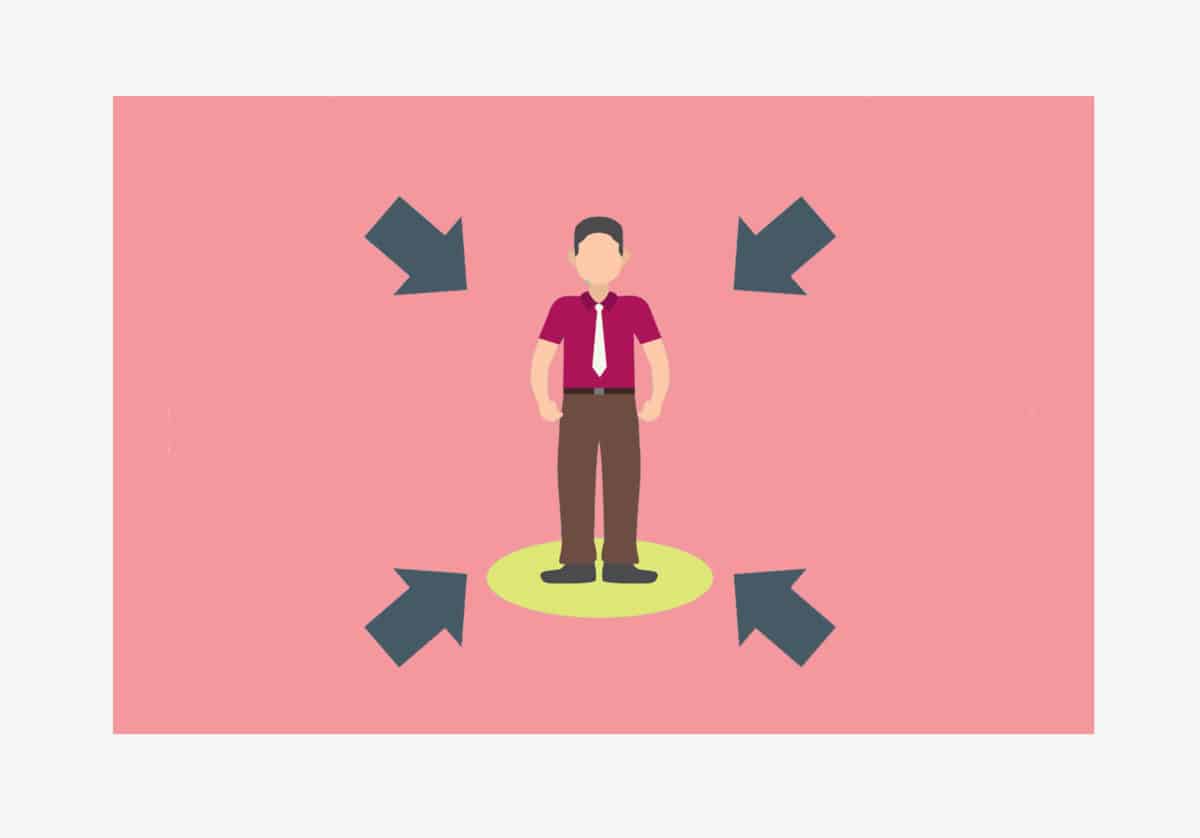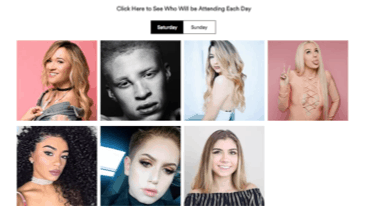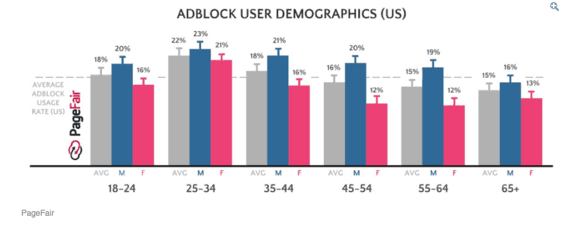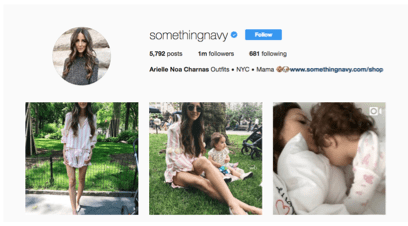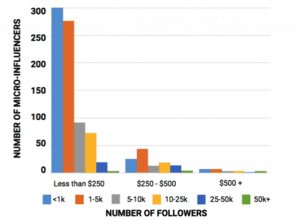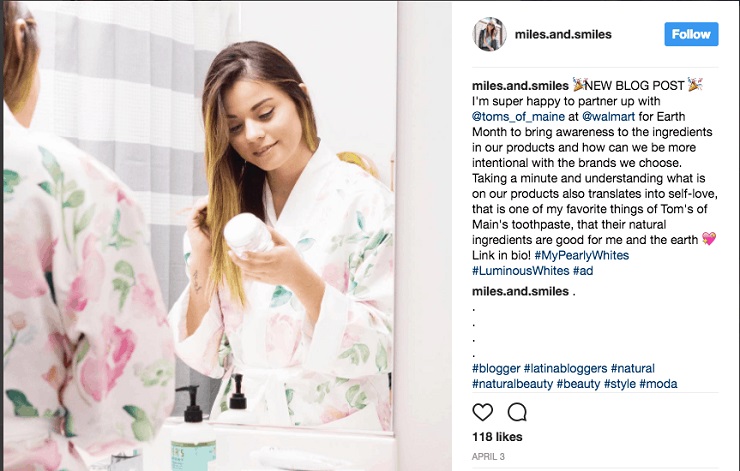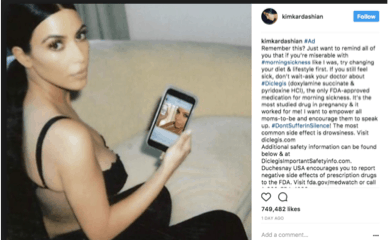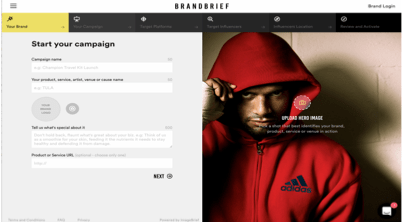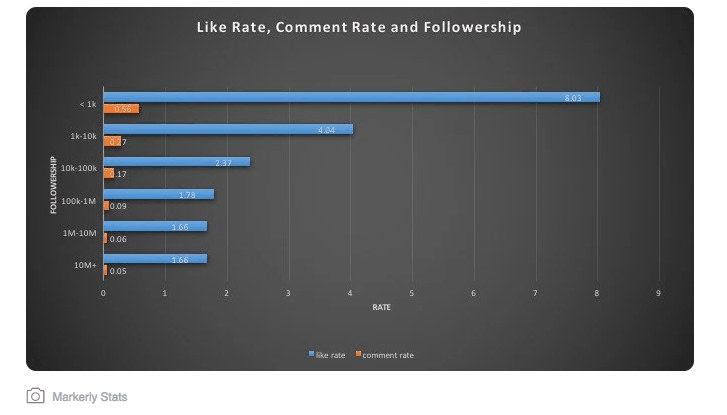Influencers are quickly becoming the new norm in marketing, upending traditional advertising models. It seems like every time you scroll through your feeds, your favorite blogger is promoting some sort of hair care product or fashion brand. While those at the top are increasingly out of reach, there’s a powerful, overlooked pool of influencers, far more accessible to your average startup—micro-influencers.
The influencer field has taken off so much, so fast, that many influencers—essentially unofficial spokespeople who are mainly internet-famous—have risen to full-fledged celebrity status (e.g. The Fat Jewish, Chiara Ferragni, Aimee Song, and many more).
Their fame is virtual, but their stardom is very real. At events like BeautyCon, influencers draw major crowds. Just last year, BeautyCon L.A saw its largest ever turnout, with people paying $349.99 to gain access to the Meet-Up Lounge and rub shoulders with their favorite YouTube and Instagram stars.
Source: Beautycon.com
Forbes recently came out with a list of top influencers and found that brands will pay some of them as much as $300,000 per YouTube video, just to have their products mentioned. The influencers on this list have grown their fan bases organically; they did not start out as celebrities. They were just a girl or guy next door who had something to say and grew a following as a result.
But influencers are not just posting about anything and everything. They have highly curated messaging, sharing only things they are passionate about. This, in turn, earns them fiercely loyal followings of real people with similar interests. It’s that shared outlook and credibility that has made influencers the future of marketing.
The Death of Traditional Ads
As influencers have risen to power, traditional TV and print advertising is becoming a thing of the past. This is great news for startups, since advertising can be expensive and doesn’t always get you the results you are looking for as a new company.
According to a report by Nielsen, 92% of people do not trust traditional advertisements; they prefer word of mouth or recommendations from friends. A study by PageFair found that adblock usage surged 30% in 2016. This is a problem for brands. If you are paying big bucks to create an advertisement and the people you are paying to target aren’t seeing it, what’s the point?
Source: PageFair
On the other hand, influencers have personal connections with their followers, because social media offers a glimpse into their lives. There is more of a two-way conversation, and their followers feel like they are discovering something, not just having products pushed on them. Consumers are more likely to trust their opinions because they feel like recommendations from friends.
One example of successful influencer is fashion and lifestyle blogger Arielle Charnas (@SomethingNavy). She often gives her followers peeks into her personal life and shares her daily routines. In one of her Snapchat stories, she used a Peter Thomas Roth product, and in 24 hours the brand sold $17,565 worth of product. That shows you how much influence an influencer actually has.
Source: @SomethingNavy
These macro-influencers (Charnas has a million followers) clearly have power, but people who are starting up companies, and even established brands, might not want or be able to pay them the thousands of dollars they bill. In fact, it can be practically impossible for smaller brands to even get the attention of an Instagram star that has over a million followers.
This is where micro-influencers come in!
Want to get your hands on the exact email templates Foundr uses to pitch and connect with hard-to-reach influencers like Tim Ferris, Seth Godin and Sir Richard Branson?
Micro-Influencers Are the Next Big Thing in Marketing
This is especially true for startups using social media marketing.
Micro-influencers have between 1,000 and 50,000 followers, whereas macro-influencers can have a couple of hundred thousand to over a million. Micro-influencers usually have distinct niches, whether fashion, beauty, or health, and they each typically only post about a singular topic.
For example, while a massively popular Instagram star has the cachet to post more or less about whatever strikes their fancy, it is rare that you see a fitness micro-influencer post about the latest fashion trends. Despite their smaller reach, micro-influencers are still passionate, authentic, and trusted.
The 4 Key Benefits of Micro-Influencer Marketing
Micro-influencers are newer on the scene, and not all companies are aware of their power yet. It’s normal to be skeptical about something that is relatively new, especially if you are a startup and want to make sure that you are spending your marketing budget wisely. Let’s dive into a few key reasons why micro-influencers are a great match for growing startups.
Authenticity
Micro-influencers are extremely trusted by their followers. Since their followings are smaller, they cannot afford to overload their feeds with sponsored posts that may disengage their followers. They have worked hard to build up their accounts and created relationships with their followers. When they take the step into sponsored posts, it has to be something that they would genuinely use or do, otherwise they risk losing their audiences.
If a micro-influencer posts something inauthentic, their followers will recognize it, and call them on it. Micro-influencers know that their followers can make or break them, which is why they have to keep their feeds honest. Micro-influencers are as loyal to their followers as they are to them.
This dynamic creates a level of authenticity that is highly valuable to brands. Micro-influencers’ followers tend to respond very well to products or services they promote. It feels like an insider recommendation, and not a forceful push. According to one study, 82% of consumers reported that they were “highly likely to follow a recommendation made by a micro-influencer.”
Passion
Micro-influencers are very passionate about their niches. For instance, if an influencer runs a health and wellness account, you can bet that they are super passionate about health and wellness. Micro-influencers are always on the hunt for the next big thing to share with their followers. They are tastemakers and strive to be in the know. If they love your product, they will be excited to share it on their page and will do so in a way that engages their audience.
Affordability
The average micro-influencer will charge $250 for one post, whereas the average macro-influencer can set you back anywhere from a couple thousand to a couple hundred thousand dollars. If you don’t have a large enough budget for a macro-influencer, or if you are just looking for a new way to promote your brand without spending too much, micro-influencers are the way to go. By partnering with multiple micro-influencers, you are able to spread your budget across multiple influencers and reach a higher number of people for less money.
Another option to consider is stories, whether they be on Snapchat or Instagram. Instagram Stories now allow all accounts an option for “Swipe Up to Link,” which will be a game changer. Now people can cash in on being the ones in the know, by linking directly to a site for purchase.
Influencers are typically even more receptive to working with you on a story than a post. Although stories disappear within 24 hours, they will still expose your product to their audience. And in fact, stories can come across as even more authentic than a post, since videos are usually unfiltered and genuine, whereas photos come across as more staged.
It is important to note that each micro-influencer has different rates, which can vary based on their past endorsements, how many followers they have, etc. Before you reach out to negotiate a price, you should have an idea of how much you are willing to pay each influencer so you don’t overspend.
The chart below shows what the average micro-influencers charge based on how many followers they have, which can help you understand how much of your budget you should put aside for influencer marketing.
Source: Wersm.com
Accessibility
Macro-influencers are overloaded with requests from brands every day. However, micro-influencers tend to do fewer sponsored posts and are more likely to respond to your emails about potential collaborations. If you are on-brand for their aesthetic, they will be more likely to work with you, so you must make sure that you reach out to the right influencer (I’ll get into this later on).
Sometimes, major influencers are also under contract with certain brands, which limits the number of brands they are able to work with, in turn making it even harder to partner with them. Micro-influencers usually do not have contracts, and are looking to find the next cool brand, so they are more responsive to partnership opportunities. This is great news for startups and smaller companies.
Examples of Good Vs. Bad Influencer Partnerships
Tom’s of Maine and Micro-Influencers: This is a great example of a brand that used micro-influencers to drive brand engagement and awareness. Tom’s of Maine reached out to micro-influencers that posted about natural beauty products, and had them post about their products. Per 1,000 micro-influencers, the brand gained 1.72 million followers and boosted engagement 600%. The company achieved their goal of increasing brand awareness and proved that micro-influencers can be extremely effective.
Source: @Miles.and.smiles
Diclegics and Kim Kardashian: OK, I know Kim Kardashian is not a micro-influencer by any means, but this is a great example on how NOT to do influencer marketing. Kim Kardashian West posted a photo promoting a prescription morning sickness medicine two years ago, and failed to note that her post was an ad. She also didn’t post the symptoms associated with the drug and didn’t include that the product was not FDA approved. After the FDA, and her fans, called her out on the mistake, Kim had to edit her post so that it stated it was an ad and included all of the risks associated with the medication. Two years later, Kim posted another ad for the company, this time with a lengthy caption stating all the information that was missing the first time. However, this time Kim was not pregnant and the image was clearly photoshopped, making it look very unauthentic.
She also posted it at a time when she was rebranding herself and wanted to make the ad fit in with her new aesthetic. But it came across looking like an afterthought, which is unusual for her carefully curated feed. The caption sounded jargony, and not written in Kim’s usual tone, so her fans called her out on the post. The reason this partnership was not a good investment for Diclegics was because 1) the nature of the caption meant it couldn’t come across as sincere, 2) the timing didn’t make sense, given the second time around she was not pregnant, and 3) that mismatched timing meant it didn’t fit with her usual branding.
Source: @KimKardashian
Sponsored posts by influencers should ring true to the brands and also adhere to all FTC guidelines. The FTC is cracking down on influencer-sponsored posts and making sure that all of their guidelines are followed. Stars such as JLo, Blake Lively, Chrissy Teigen, and the Hadid sisters were all fined $40,000 for violating section 5 of the FTC Act. This might not seem like a big deal to celebrities, but it’s a hefty fine for a micro-influencer or small brand, so it is important to read over the rules before you collaborate with an influencer.
Want to get your hands on the exact email templates Foundr uses to pitch and connect with hard-to-reach influencers like Tim Ferris, Seth Godin and Sir Richard Branson?
How To Find Micro-Influencers
The easiest way to find micro-influencers is to search on Instagram, Twitter, Facebook, etc., to see who fits the bill. You can search through relevant hashtags and locations, or go through your favorite macro-influencer’s page and see if any micro-influencers comment on their posts or follow them.
For example, if your brand sells organic food and is based in New York City, you can search #organic, or search under locations for Whole Foods stores in NYC, or other places that sell organic food and go through those pages to see if there are any micro-influencers that are on brand. You can also check out the comments on your favorite food bloggers’ Instagram pages and see if any micro-influencers commented on relevant posts.
However, this can become incredibly time consuming. One shortcut is to check your tagged posts on Instagram and see if any micro-influencers are already fans of your product. Chances are, if someone has already posted about your brand, they’d love to get paid to do it.
New brands might not have influencers following them yet, so finding an influencer who is already a fan can be a little more difficult. These tips on growing your social media following can be helpful for startups looking to raise brand awareness before they start spending money on promotions.
Another way to find influencers is by using apps that pair you with accounts that are right for your brand. These apps are extremely helpful for startups that aren’t exactly sure where to start when it comes to influencer marketing. They can help to build relationships with influencers and save a lot of time and money.
For startups that don’t have a large budget, we created an app called BrandBrief that allows you to post a campaign targeted at influencers, listing company objectives, bio, and types of posts you are looking for.
Source: BrandBrief
How To Choose The Right Influencer For You
Once you know where to find influencers, the next step is making sure that the influencers you are targeting are right for your brand. Of course, it is common sense that you want to pick someone who aligns with your brand, but there can be more things to consider than you think.
For instance, when it comes to beauty influencers, there are several things to consider before you reach out. If your company tests on animals, or isn’t organic, it is not a good idea to reach out to someone who only posts about organic products or who is against animal testing. Or, if you are a fashion company looking to target people who are shopping on a budget, you do not want to reach out to someone who often posts about high-end designers.
Finding the right fit for both the brand and influencer is important. If the influencer genuinely is into the product or service, their post will resonate well with their followers. This is crucial to be truly effective when doing a sponsored social media post. Since micro-influencers don’t do as many sponsored posts as celebrities, they will often only accept opportunities for brands they believe in, which is why their fans will still be interested, even if they are labeled #ad or #spon.
Another important step is to make sure that their followers are real. It is important to make sure the micro-influencer you partner with has an organic following, not thousands of followers they purchased online. Instagram has been cracking down on these accounts and has been making an effort to shut them down, but there are still influencers out there whose followers are purchased. If someone has 100,000 followers and only gets around 500 likes on their pictures, odds are their followers are fake.
Follower engagement is another important aspect. Make sure to look through their posts and see how many comments they get. If an influencer only gets a couple comments, you will know that their followers are not legitimate. Some accounts may have higher followings and high like rates, but if they do not have any comments, it’s a telltale sign that their followers are robots. If an influencer has built an organic fan base, their followers will tag their friends in the comment sections or leave comments in hopes that the influencer will respond.
An account with actual followers will have a good like-to-follower ratio, as well as a good follower-to-comment ratio. Make sure to double check before you reach out to an influencer so you can verify that their following is legitimate before any agreements are made.
There are also programs like Tribe Dynamics, that will give you a more in-depth analysis about social media posts. They created a metric, “Earned Media Value,” that tells you how much brands save when influencers post about their product. This can help you see, in numbers, how much you are saving when influencers organically post about your product. They will also help you identify and manage influencers for your company so you can create partnerships with influencers that are on-brand.
The chart below shows the average engagement rates for accounts with different followings. You can see the average like and comment rate for micro-influencers compared to larger influencers, which will help you get a better idea about what a good ratio for micro-influencers is.
Source: DigiDay.com
Want to get your hands on the exact email templates Foundr uses to pitch and connect with hard-to-reach influencers like Tim Ferris, Seth Godin and Sir Richard Branson?
So Are Micro-Influencers Right for You?
Influencers are becoming the new norm for companies promoting their products or services, and micro-influencers are the future of this type of marketing. For growing startups especially, micro-influencers should be a no brainer to help generate a following and spread the word. For bigger companies, they should be an important supplement, if not a focus.
Micro-influencers share your product or service with excitement and sincerity. A sponsored post from a micro-influencer feels like a recommendation from a friend, not a blatant advertisement. Even though they may only have a couple thousands followers, each one of their followers is highly engaged and responsive.
If you are thinking of spending your advertising dollars on a major ad campaign or reaching out to a famous influencer, make sure you consider working with micro-influencers as well, or instead. With trust in advertising at an all time low, micro-influencers will give you the added exposure you need.
How have you observed influencers and micro-influencers changing the marketing world? Comment with your thoughts below!
